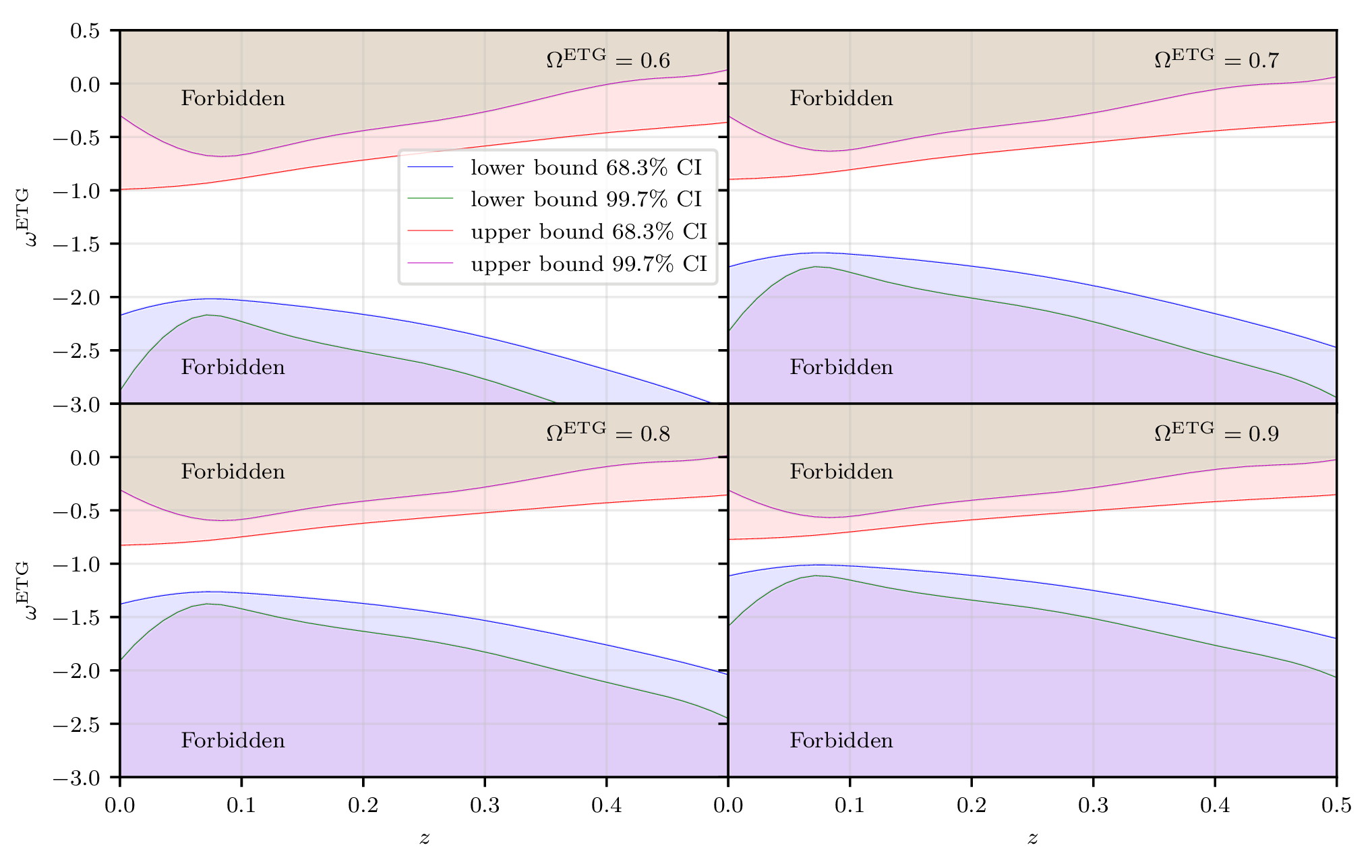In our public preprint [1] we discuss how we can use the energy conditions to constrain a wide range of Extended Theories of Gravity (ETG).
We know observationally that at least at the local tests (e.g., solar system scale), general relativity describes extraordinarily well the gravitation dynamics, moreover at these scales all energy conditions are fulfilled. Thus, it is reasonable to impose the energy conditions to the energy momentum tensor that describes the ordinary matter components. From this assumption we derive a new condition on this class of ETGs. Armed with this new condition we can impose different bounds on the ETG effective energy density, pressure and equation of state using observational data. For example, with a further assumption that the effective energy density of the ETG is strictly positive we get the following bounds in the figure below:

This figure shows the upper and lower bounds on \(w^\mathrm{ETG}\), the ETG’s effective equation of state. The four panels show how these bounds depend on the value of the ETG’s energy density. We expect future observations (Supernovae Ia, Baryon Oscillations, cosmic chronometers, etc) will be able to pinpoint which characteristics a viable ETG must have.